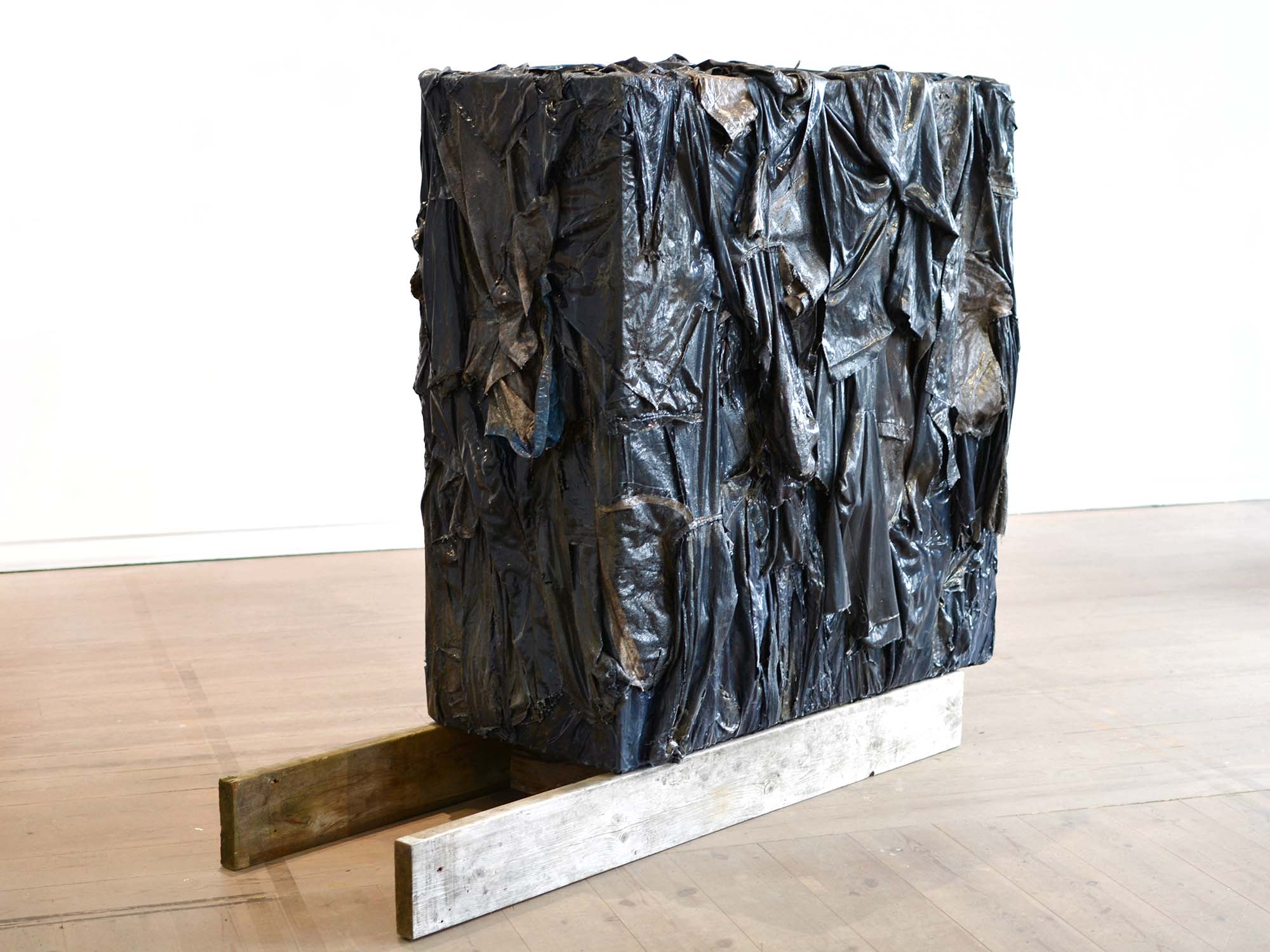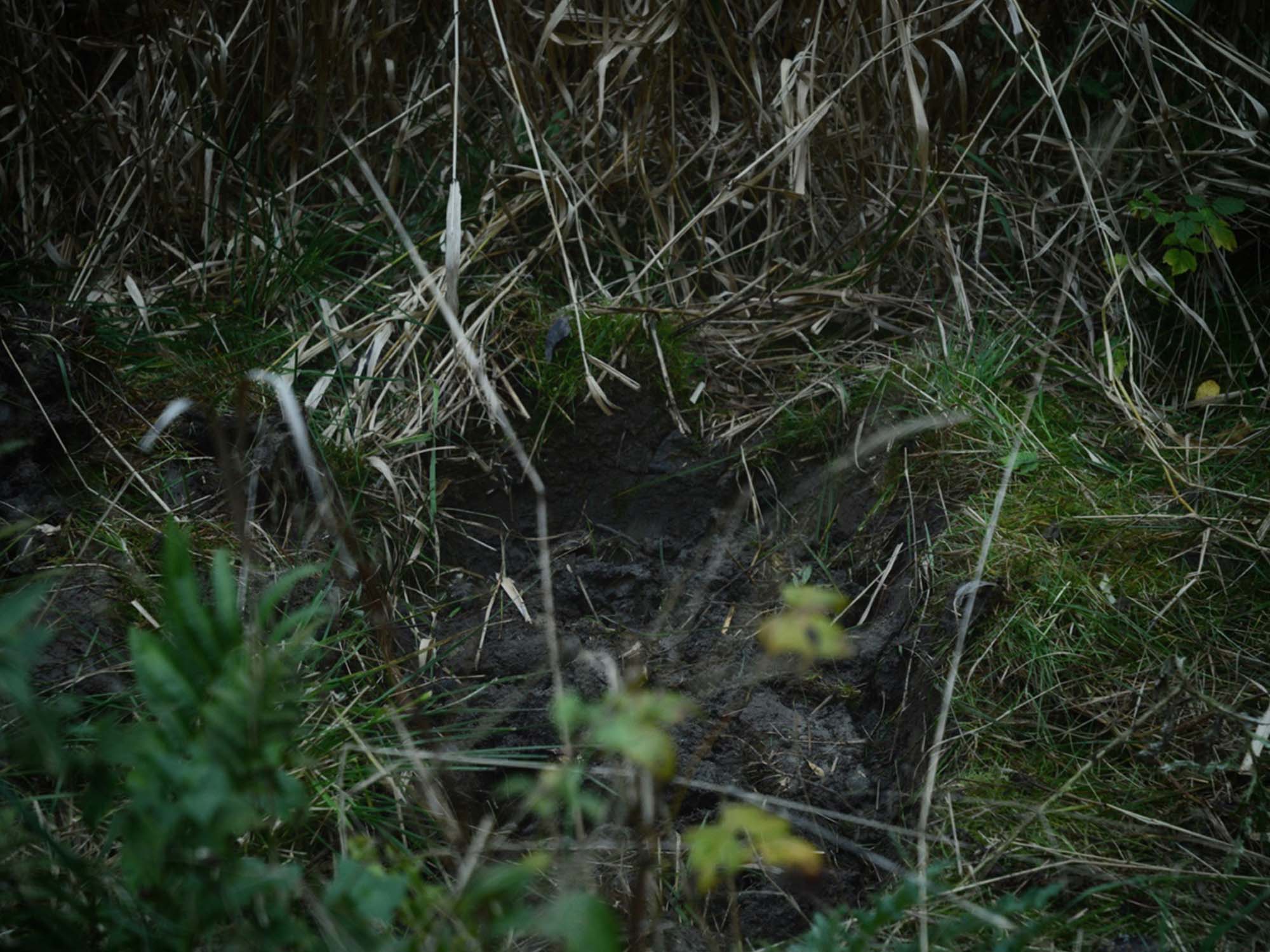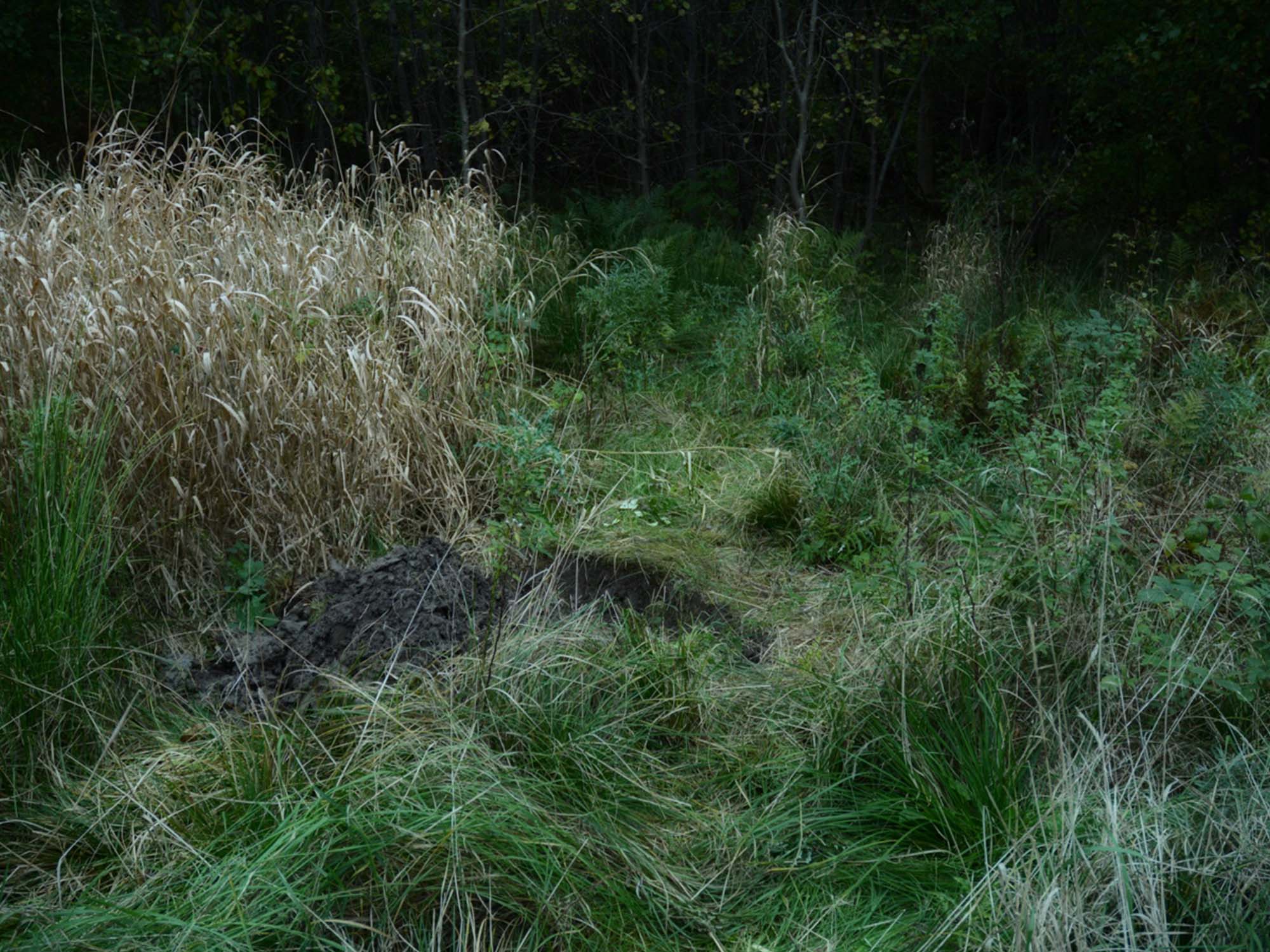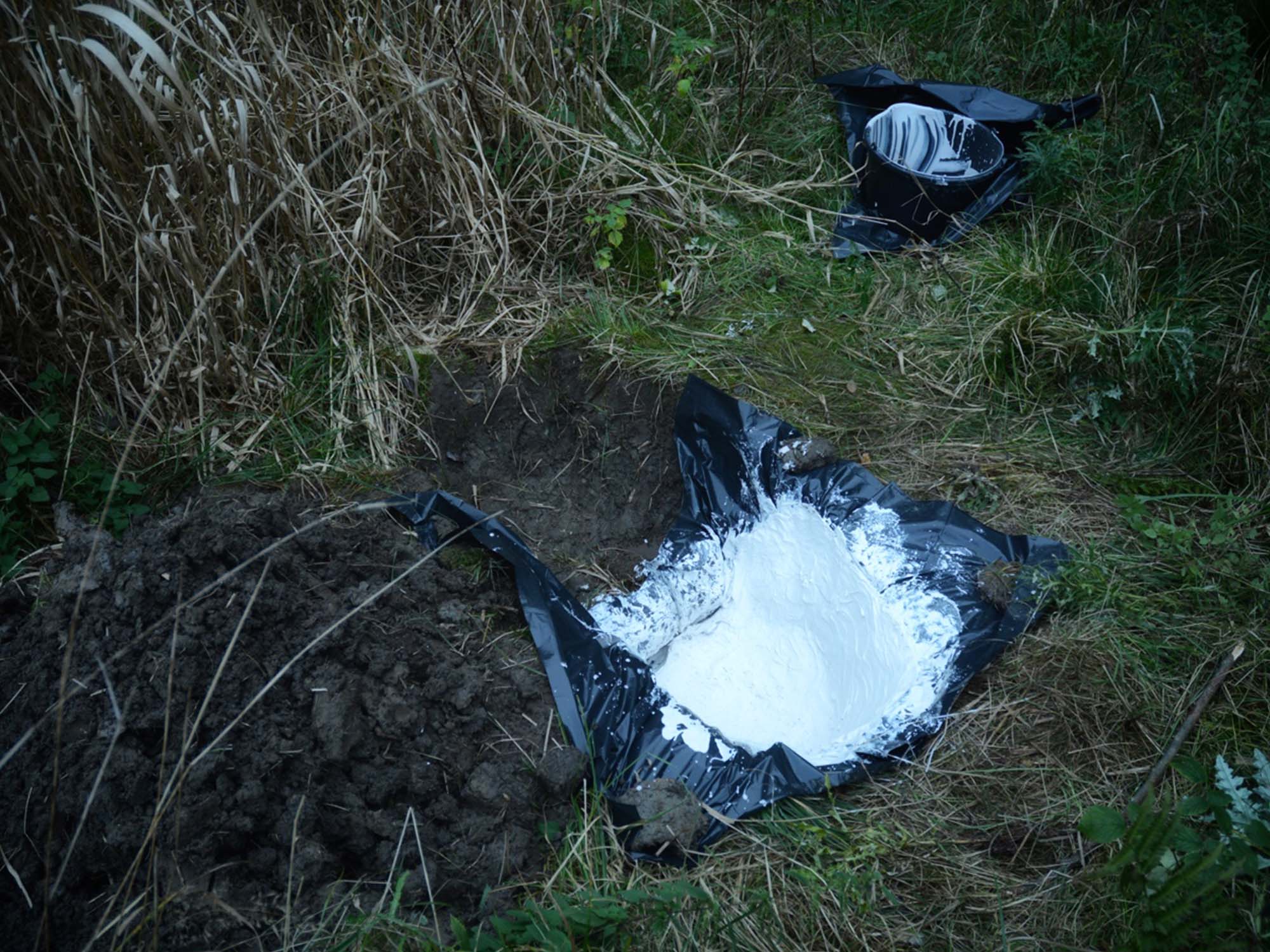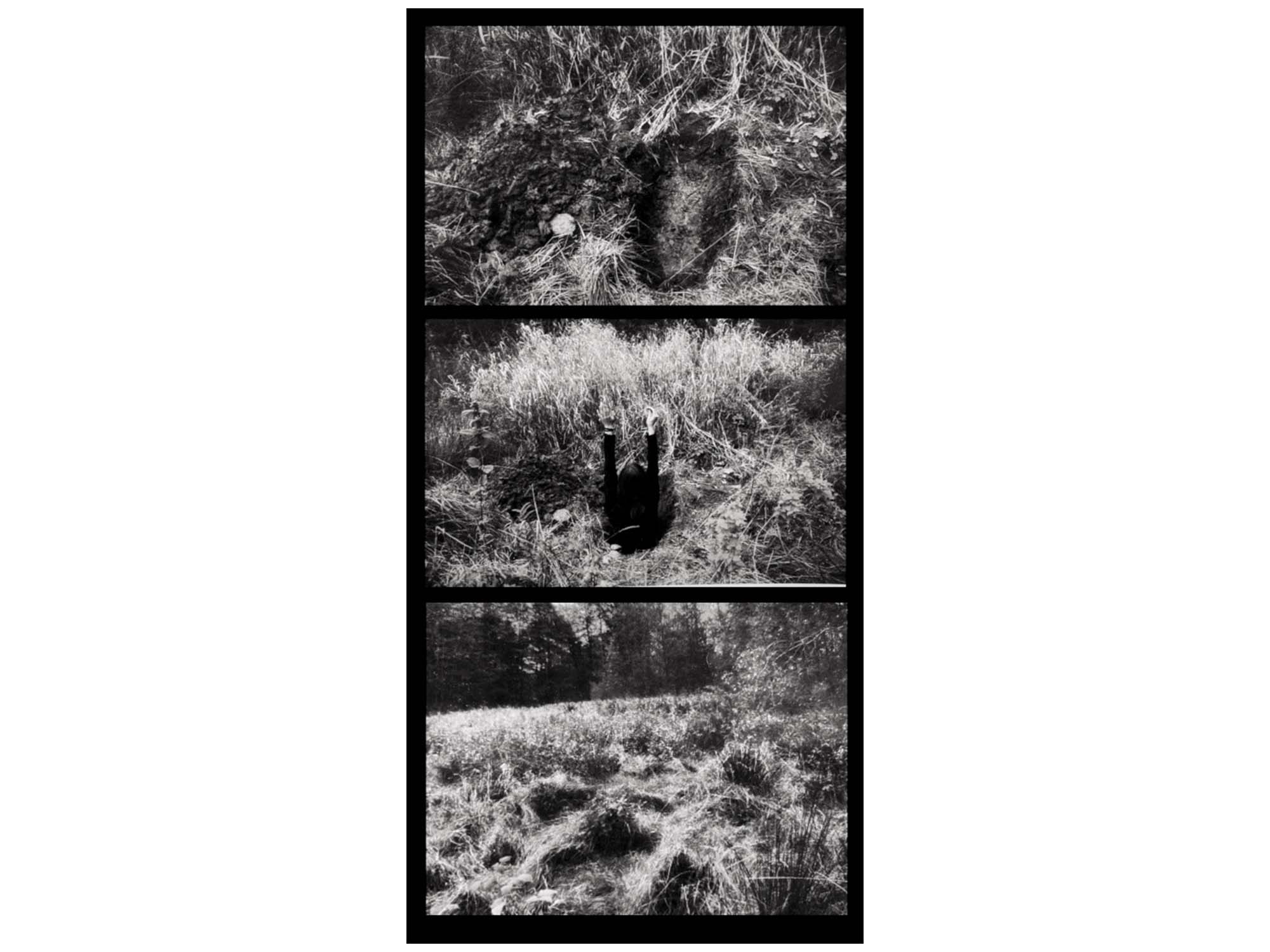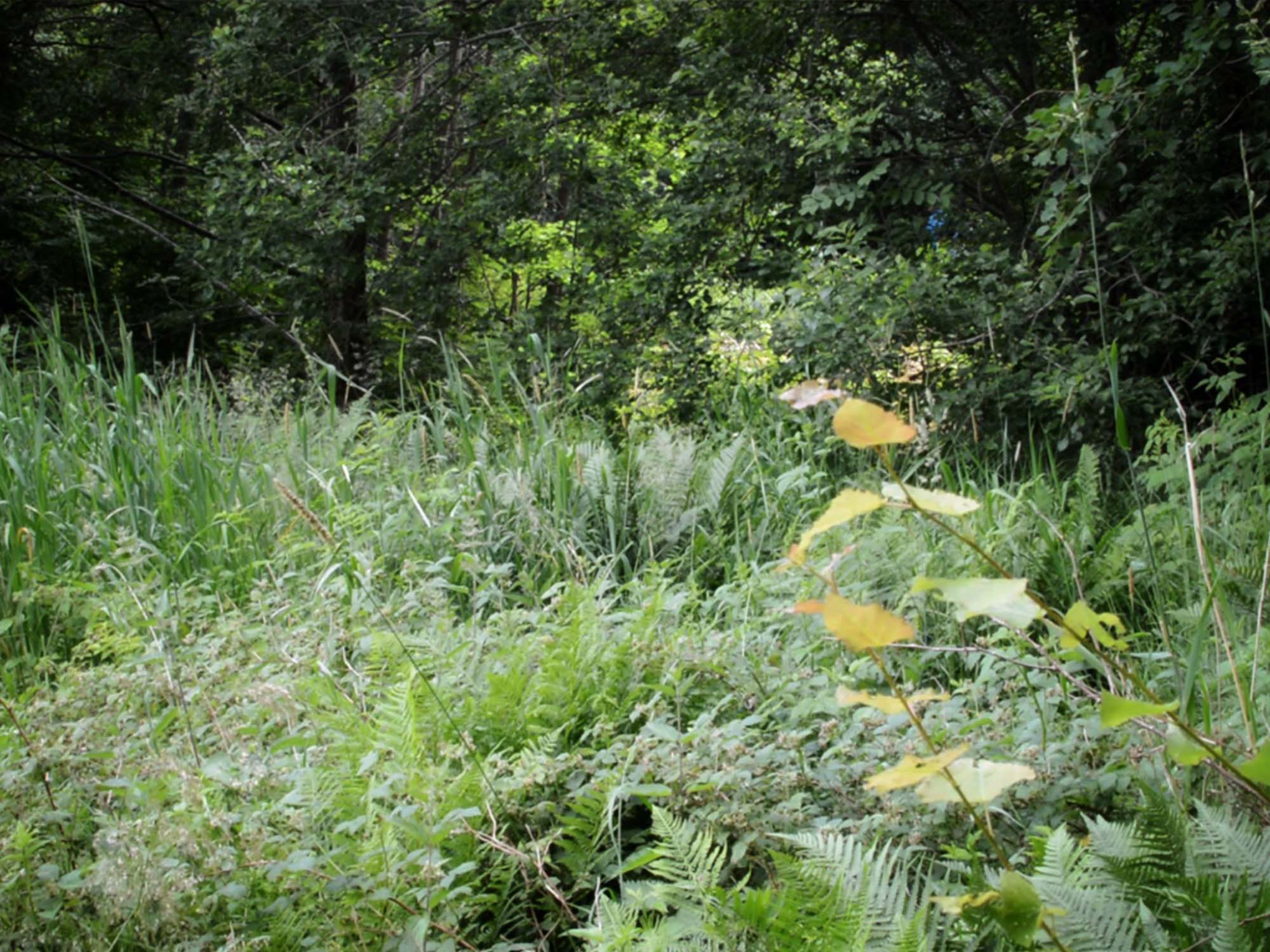Inverto 1935–2020, ll
2020
Sculpture 148 x 179 x 70 cm
Jackets, shirts, children’s overalls, mud, glue, wood
Kemilä writes in an online conversation preparing for the exhibition, “the process behind Inverto 1935–2020 is long.” The sculpture is part of a series that explores traces of trauma and absent history from various landscapes. Nation-states, most often than not, aim for denial and concealment when it comes to digging into their own past. They hide the remains of those murdered in their prisoner-of-war camps, in this instance, or make them disappear from the landscape and public memory. Coming from a personal, family history angle, the artist retraces these omissions and, in a sense, makes a mould of them that then becomes a memorial object.
“At a former military training field in Gothenburg, I use violence and kick clothes in mud in order to get in touch with my family history. The sculpture Inverto 1935–2020, II is a box covered with these muddy jackets, shirts and outerwear. It spans from the mass executions in the former Soviet Union and the prisoner-of-war camps of the Second World War to
present-day Gothenburg.”
(Dominika Kemilä)
Biography
Dominika Kemilä (b. 1985, Sweden) is a visual artist. In the media of sculpture, painting, and video, she investigates extinction and belonging through site-specific actions. Kemilä has been engaged in self-initiated artistic research on Second World War prisoners in the Nordic countries since 2014. Her own family roots are in several minority populations that existed in the Soviet Union. Kemilä has been selected as a guest artist in Trondheim, Vadsoe, and Lofoten in Norway. Her work has been shown in solo and group exhibitions in Sweden and Norway.
Provocation
Structured around the theme of the city as a machinery of the present time, Comforting the machine synthesised and gave its audience a tight and poignant grasp of truths in the raw. In preparation for the exhibition, the ten artists were also invited to submit something the curators called “Provocations”. The provocation to each artist was a task to expand themselves beyond the walls of the gallery by mapping traces of their work in the region, in history and the future, and to collate them as a string of continuations.
Provocation image
Provocation text (swedish)
Utan titel, 2016
Performance, arbetsprocess och foto.
Utfört på ett fd militärt övningsområde i Göteborg.
Då, 2016, visste du att det var viktigt att det inte skulle bli en grav. Inte riktigt en grav, utan en halv. Du grävde en grop utifrån din kropp i sittande position. Gjöt sedan av den i två halvor. Du visste inte varför, men det var av största vikt.
Trauma splittrar minnet. Det splittrar identiteten. Och det ger en slags minnesförlust. Det oönskade, den livshotande upplevelsen trängs undan från medvetandet, in i glömska. Det finns ett problem med det. Och det är att kroppen minns. Och den kommer påminna dig om denna upplevelse på en mängd sätt. Sätta sig i kroppen som fysisk oförklarlig smärta. Ge dig minnesbilder, flashbacks, mardrömmar. Traumat behöver plats, det behöver en sammanhållen berättelse med en början och slut för att kunna läka.
Vad sker sen när det oönskade är du själv? När du blir till den andre? Det främmande elementet, som inte rör sig inom gemenskapen, just genom ditt främmandeskap – det som kommer med att vara rotlös, i exil, eller föräldralös i världen. Att inte tillhöra.
Eko, 2021- pågående
Stillbild video.
Filmat på samma plats där gropen grävdes 2016 och kläder sparkades in i gyttjan 2020. Bin av olika slag, motionärer springer förbi, småbarnsföräldrar rullar barnvagnar. Inga synliga spår från det konstnärliga arbetet. Om vi tillsammans föreställer oss att vi ser in i framtiden, kan vi se hur jag återvänder till platsen till vintern. Jag filmar, skriver och låter materialet bli till ett vibrerande eko. Arbetet är en pågående undersökning av metoder för att inte överge minnet. Att minnas en handling, att agera.

